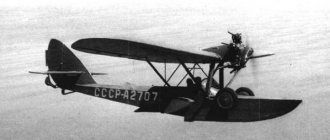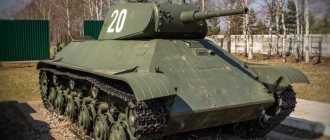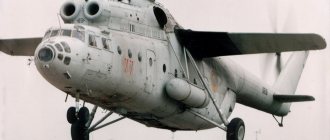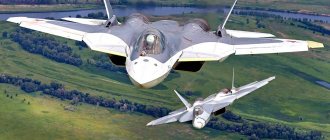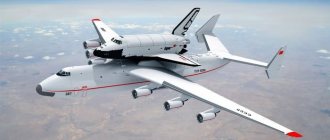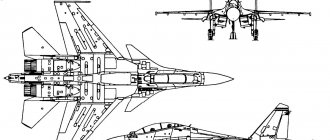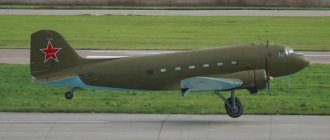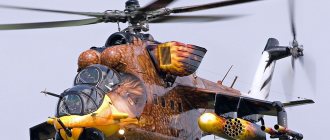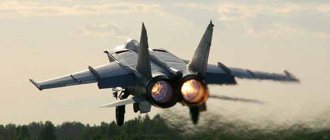Home » Books on the history of tanks » Yuri Pasholok. Fatal self-propelled gun Su-12
Books on tank history
boroda 01/17/2019 2435
12
in Favoritesin Favoritesfrom Favorites 8
Sverdlovsk (modern Yekaterinburg) was the real cradle of Soviet self-propelled artillery during the war period. It was here that during the war years the concept of Soviet light and heavy assault self-propelled artillery mounts (SPG) was worked out. At the same time, however, neither the light nor the heavy assault self-propelled guns developed here were ever put into production. One of the reasons for this paradoxical combination of circumstances was the resolution of the State Defense Committee (GKO No. 2120) “On organizing the production of T-34 tanks at the Uralmashplant and plant No. 37 of the People's Commissariat of Tanks.” In accordance with this document, instead of the T-70 tank, on the chassis of which light self-propelled guns of local development were based, it was planned to produce the T-34 in Sverdlovsk. Self-propelled guns SU-31 and SU-32 found themselves without a production site. For this reason, all developments on self-propelled guns were transferred to plant No. 38 in Kirov. of the SU-12 began
, the first vehicle to receive the more famous
SU-76
.
Based on the developments of plant No. 37
By the fall of 1942, the design bureau (KB) of plant No. 38 could not boast of any serious new developments. This is not surprising, since it did not receive tasks to create new tanks and self-propelled guns. However, the team, which was headed by chief designer M.N. Shchukin, there were certain developments. For example, in the fall of 1941, even before the evacuation from Kolomna, the factory design bureau developed a cast turret for the T-30 tank, and it was even produced in a pilot series.
Tank T-30
In addition, in May 1942, designer A.A. Chirkov, with the participation of Shchukin, created a project for a light tank. The vehicle, developed in two versions, was to be equipped with two M-11 aircraft engines. The design used the transmission and chassis of the T-34. As weapons it was planned to use a twin installation of 20 and 45 mm caliber guns, as well as a DT machine gun. The first version of the tank, which had a combat weight of 14 tons, was supposed to have armor thickness from 10 to 45 mm. The second option differed only in the thickness of the armor, which increased to 25–60 mm.
The matter did not progress beyond the preliminary design, and no drawings of this machine were preserved. At that time, the priority task for the plant and its design bureau was to master the production of the T-70, and not to design new armored vehicles on its own initiative. But the work on transferring the production of tracks from Hadfield steel to steel 40 ended successfully. Already in December 1942, the joint development of NII-48 and the chief metallurgist of the plant, Noskov, went into production.
Longitudinal section of SU-12
The work of the design bureau of plant No. 38 on light self-propelled units was, rather, of an auxiliary nature. The ideological inspirer of the creation of the chassis for the SU-31 and SU-32 was designer S.A. Ginzburg, who remained the chief designer of the new light self-propelled guns in Kirov. The team headed by Shchukin only embodied the ideas of the main ideologist of the machine. In the spring of 1943, this fact was taken into account during the “debriefing”, because Shchukin and his team, unlike Ginzburg sent to the front, were not harmed.
SU-12 from above. The layout diagram of the engine-transmission group is clearly visible
Work on the self-propelled unit in Kirov did not begin immediately. It was necessary to choose a chassis for creating a new self-propelled gun. As tests have shown, the SU-31 with parallel engines had an advantage over the SU-32, designed on T-70 units. The tests conducted at the NIBT Test Site on September 28–29, 1942 also completed successfully. Here the cross-country ability of the SU-31 and T-70 was compared, and it turned out that it was the same. But the SU-32 power plant overheated during testing. And Ginzburg himself advocated a design with parallel engines. It is not surprising that the SU-31 was chosen as the basis for the new self-propelled guns.
Alas, when choosing the chassis, some other features of the cars were ignored. For example, the SU-31 was built on the basis of units of the earlier T-60 small tank, while the SU-32 was built on the basis of the T-70. In addition, the vehicles belonged to different types of self-propelled guns (the SU-31 was an anti-aircraft self-propelled gun (ZSU), and the SU-32 was built as an assault self-propelled gun). Accordingly, the vehicle reservations were also different.
A sophisticated gear shift system, which was used on the SU-12 and SU-11
On October 16, 1942, tactical and technical requirements for self-propelled guns were formed. They basically corresponded to the characteristics of the SU-31 and SU-32. Taking into account the fact that a parallel arrangement of engines was chosen as the basis, this state of affairs looks a little strange. In addition, the requirements also included a third self-propelled gun - a tank destroyer based on the T-70. On October 19, GKO Resolution No. 2429 “On the production of prototypes of self-propelled artillery units” was signed. According to him, prototypes of the vehicles were planned to be received by November 20. All three options (assault self-propelled guns, self-propelled guns and tank destroyer) were put into operation only by the Gorky Automobile Plant (GAZ) named after. Molotov. The vehicles were designated, respectively, GAZ-71, GAZ-72 and GAZ-73.
However, it should be borne in mind that GAZ named after. Molotov was, rather, a backup option. Priority was given to vehicles that were designed in Kirov. Here the self-propelled gun received the designation SU-11, and the assault self-propelled gun - SU-12.
Installation diagram of the ZIS-3 gun in the fighting compartment of the SU-12
The main task was to create the SU-12, that is, an assault vehicle with a ZIS-3 gun as a weapon. As an alternative, instead of the ZIS-3, it was planned to install the IS-1 anti-tank gun (slightly modified ZIS-2), but it never came to that.
Despite the fact that the general concept embodied in the Sverdlovsk self-propelled guns remained unchanged, the joint development of Ginzburg and the design bureau of plant No. 38 was quite different from them. The chassis on the units of the T-70B light tank was used as a base here. The modernized T-70 began to be produced in Kirov from the beginning of October 1942. In addition to lengthening and adding a sixth road wheel, its chassis differed from the “regular” T-70 in that a non-rubber road wheel was used as a sloth. The SU-12 hull generally corresponded to the SU-31 concept. In particular, the engine cooling system and their air intakes were designed in a similar way. At the same time, some of the elements, including the driver’s hatch, “migrated” to the self-propelled guns from the T-70B. Characteristic elements thanks to which the SU-12 can be easily distinguished from the front from the later SU-15M were two access hatches to the transmission elements in the upper frontal plate, as well as two access hatches to the winding mechanisms.
Prototype ZSU SU-11, December 1942
The fighting compartment has undergone the greatest changes compared to its predecessor. On the SU-32 it was too cramped, and the idea with a frontal machine gun was considered not the best. As a result, the cabin was completely reconfigured. It turned out to be noticeably more spacious, and the protection of the crew became much better. Instead of a ball installation, ports appeared in the front panel of the cabin, covered with covers. The aft part of the cabin was greatly altered, which received a three-leaf hatch. The increase in the size of the cabin was due to the fact that now there were not two, but three crew members. In addition, the car received a 9-P radio station. Visibility from the wheelhouse also improved noticeably - periscope devices were installed along its perimeter.
The same car in front
The gun mount generally remained the same. It included not only the swinging part of the 76-mm ZIS-3 cannon, but also part of its carriage along with cut-off frames. The beds partially “ate up” the increased internal volume of the fighting compartment. The vehicle differed from the SU-32 in its armor system, which was much more successful in design and technologically advanced.
Gun at maximum elevation angle
In parallel with the SU-12, work continued on the SU-11 self-propelled anti-aircraft gun. The designers did not invent the bicycle and took the SU-12 chassis as the basis for the ZSU. The anti-aircraft installation was developed, as they say, in the wake of the base chassis. Only the fighting compartment was altered: instead of a wheelhouse, a platform similar to the one used on the SU-31 was installed. In general, the design of the platform turned out to be successful; its alterations, in comparison with the SU-31 platform, turned out to be minimal.
Su-12 characteristics:
| Modification | Su-12 |
| Wingspan, m | 21.57 |
| Length, m | 13.05 |
| Height, m | 4.26 |
| Wing area, m2 | 52.00 |
| Weight, kg of empty aircraft | 7552 |
| Weight, kg normal take-off | 9510 |
| engine's type | 2 PD ASh-82M |
| Power, hp | 2 x 2100 |
| Maximum speed, km/h at the ground | 460 |
| Maximum speed, km/h at altitude | 530 |
| Cruising speed, km/h | 505 |
| Practical range, km | 1140 |
| Maximum rate of climb, m/min | 945 |
| Practical ceiling, m | 11000 |
| Crew, people | 4 |
| Weapons: | one 20-mm BT-20 cannon and three 20-mm B-20E cannons |
| bomb load - up to 400 kg |
Russian combat aircraft
In a series with a defect
According to plans approved by the Main Artillery Directorate of the Red Army (GAU KA), prototypes of the SU-11 and SU-12 were supposed to be built by November 15, 1942. Already on October 29, a test program for self-propelled guns was signed. From the GAU side, the topic of self-propelled guns, which were built at plant No. 38, was supervised by engineer major Getmanov.
Taking into account the fact that Plant No. 38 had not previously dealt with self-propelled guns, the established deadlines look too tight. It was not possible to invest in them, although in Kirov they took this responsible task very seriously. But already on November 21, both the SU-11 and SU-12 were not only built, but also began to be tested. Factory testing was completed by the 27th. During this time, the SU-11 covered 100, and the SU-12 – 112 kilometers.
A prototype of the SU-12 during factory testing. Kirov, end of November 1942
The dispatch of self-propelled guns to the Gorokhovetsky ANIOP was somewhat delayed. Both cars left there only on December 5th. However, by that time it had already become clear which vehicle had become the favorite in the Soviet program to create a light assault self-propelled gun. On December 2, Stalin signed GKO Resolution No. 2559 “On organizing the production of self-propelled artillery units at the Uralmashplant and Plant No. 38.”
The same car at the Gorokhovetsky ANIOP, December 1942
This document contained the following points:
"1. Oblige the People's Commissariat of Tank Industry (Comrade Zaltsman):
<�…>
b) organize at plant No. 38 (Kirov) the production of SU-12 self-propelled artillery mounts based on the T-70 tank with a 76 mm ZIS-3 cannon, with the discontinuation of T-70 tanks from January 1, 1943.
2. Approve the following program for T-34 and T-70 tanks and for SU-35 and SU-12 self-propelled artillery systems:
<�…>
b) at plant No. 38
T-70
- December month 1942 – 200.
On January 1, 1943, the T-70 tank was discontinued from production.
SU-12
December month 1942 – 25 pcs.
January month 1943 – 150 pcs.
February 1943 – 200 pcs.
March month 1943 – 200 pieces.”
Nobody canceled the tests. The presence of two vehicles on the same base made it possible to better assess the reliability of the chassis. As subsequent events showed, with the SU-12 and (partly) with the SU-11 the situation here was far from smooth.
The same vehicle on the right, gun at maximum elevation angle
Firing tests began on December 6 with determination of firing characteristics. In total, the SU-12 fired 64 rounds, while its rate of fire was 12 rounds per minute. Good stability and satisfactory accuracy were noted. Overall, the car was considered quite successful. However, it was noted that the design of the fighting compartment of the competing SU-71 (GAZ-71) has a number of advantages. There, the installation of the system turned out to be less cumbersome, there were no protruding frames, and the gun stopper in the stowed position was more successfully executed.
View of the fighting compartment of the SU-12
Sea trials began on December 9. The SU-71 did not participate in them because it broke down. As for the SU-12, in the first days mechanical problems did not bother it. True, the car had to be equipped with larger front mudguards, since the snow flying up deprived the driver of the view. The same was done on the SU-11, which was tested in parallel.
On the 11th, shortly after the start of the run, an oil leak was discovered in the cooling system. The malfunction was eliminated, after which the run continued. In total, during this time the car traveled 300 kilometers, but then big troubles awaited the car. At the 400th kilometer, a serious breakdown of the gearbox of the right engine occurred, which is why part of the sea trials had to be carried out on one engine. A similar breakdown occurred in the SU-11 ZSU after 350 kilometers. As a result, the SU-12 self-propelled gun was declared unable to withstand sea trials.
The commander's workplace, the installation of the 9-R radio station is visible. Also visible is the protruding frame of the gun, which greatly interfered with the crew
The conclusion, issued on December 18, stated the following:
"1. The 76 mm self-propelled gun, developed by Plant No. 38 of the People's Commissariat of Tank Industry, is a new type of artillery weapon capable of accompanying infantry and motorized mechanized units in an artillery offensive and solving fire tasks inherent in 76 mm guns.
2. The prototype of the self-propelled gun presented for testing passed the test in the artillery part, but in relation to the self-propelled part it did not pass the test and for this reason, without eliminating the defects noted in the commission’s report, it cannot be recommended for service.
Once the shortcomings are eliminated, the self-propelled gun should be subjected to sea trials at the factory for at least 500 kilometers, and upon receipt of satisfactory results, the Commission considers it possible to accept it into service with the artillery of the Red Army.”
On December 15, a technical meeting was held at plant No. 38. It resolved the issues of redesigning the ZIS-3, which, among other things, should have lightened the system a little. The fact is that to compensate for the weight of the armor, a load weighing 100 kg was attached under the breech of the gun. The issue of reworking the gun stopper in the stowed position was also resolved. It was decided to abandon the side viewing devices; the periscope remained only with the commander. The driver's viewing device was made motionless.
An interesting situation has arisen with gearboxes. On December 18, Ginzburg prepared a memo addressed to the People's Commissar of the Tank Industry Zaltsman. In it, the chief designer of the SU-12 pointed out the poor performance of the synchronous gearbox shift drive as the cause of the defects. At the same time, he called the source of the problem the very low quality of manufacturing of the SU-11 and SU-12 prototypes.
Work of the SU-12 crew during firing
It must be admitted that Ginzburg was partly right. Prototypes of armored vehicles created during the war period often had huge problems with build quality. For example, poor build quality buried the development program for the KV-13 heavy tank in its original form. However, the KV-13 itself had a sufficient number of design flaws.
The same applied to the SU-11 and SU-12. Very similar breakdowns in both cars should have alerted the chief designer. But the GKO decree has already launched the mechanism for preparing self-propelled guns for mass production. At that moment, it seemed to Ginzburg that it would be easier to fix the problems later, and now it would be enough to eliminate the manufacturing defect. Referring to the fact that similar problems were observed on both the T-60 and T-70, the chief designer of the SU-12 went to Kirov to personally supervise the assembly process of production vehicles. This approach had an effect: although the reports for January 1943 from training units reported some defects, there was not a word in them about problems with gearbox failures. At that moment it seemed that the defect had been overcome. In reality, at that moment Ginzburg signed his own death warrant, since his actions only delayed the massive failure of the checkpoints on the self-propelled guns created under his leadership.
Comparison of loss levels[edit]
Although the Su-2 has been criticized due to the number of losses it suffers, its losses compare favorably with other attack aircraft used by the Soviet Air Force in World War II.
| Type | Average number of sorties before loss |
| Su-2 | 80 |
| Pe-2 | 54 |
| Il-2 (double) | 26 |
| A-20 | 19 |
| IL-2 (single) | 13 |
[3]
Protection
While testing of the SU-12 and SU-11 continued, plant No. 38 was preparing for the production of a self-propelled gun. As soon as the production of the T-70B of the December plan ended, a new self-propelled gun took its place. By the end of December 1942, the first 25 vehicles were built in Kirov. Externally, they were practically no different from the prototype. The difference was the absence of side periscope devices and some other modifications. As for the SU-11 anti-aircraft self-propelled gun, its fate turned out to be sad. The higher priority of the SU-12 led to the fact that the ZSU, which the troops needed, was forgotten - it simply was not in the production plans.
First version of the fighting compartment roof
On December 29–31, life tests of the SU-12 No. L212602 were carried out. The car traveled 500 kilometers without breaking the gearbox. It seemed that the problem really lay in poor-quality manufacturing of the boxes, and thanks to the work carried out to refine the gearbox switching unit, it was possible to solve it.
SU-12 in the village of Teterevino, Kursk region, June 1943. Early production car, no roof
The most noticeable change to the self-propelled gun, introduced already during its mass production, was the roof of the fighting compartment. Initially, the car, like its predecessors and rivals, was designed with an open top. Correspondence found in the archive of economics (RGAE) testifies that Stalin personally ordered that the self-propelled guns be equipped with a roof. The roof, which was 6 mm thick, had three hatches for periscopic observation devices, as well as a cutout with a cover for a panoramic sight. The appearance of the roof was dictated by quite prosaic considerations: crews in the open fighting compartment were often hit by shell fragments and bullets. The correctness of the roof idea was confirmed by the very first combat clashes in which the SU-12 took part. From the Volkhov Front, where self-propelled guns of this type were first used, there was even a requirement to install roofs.
SU-12 with serial number L33432, on which the ZIS-8 system was tested. This is what all the cars looked like starting in March 1943
Roofs should have been introduced into the design of production vehicles in the series since January 1943, however, due to the lack of 6 mm thick sheets, neither in January nor in February SU-12s with a closed fighting compartment were produced. According to the order of the Main Armored Directorate of the Red Army (GBTU KA), from March 1, plant No. 38 was obliged to produce the SU-12 only with a roof, and, judging by the photographs of the vehicles produced in March, this order was carried out. However, at least 215 SU-12s, that is, a little more than a third of all self-propelled guns of this type produced, were manufactured without roofs.
Some authors are of the opinion that the troops removed the roofs from the SU-12 due to poor ventilation of the fighting compartment, but this is not true. In addition to the installation of a roof, the SU-12 produced in March-June 1943 differed from earlier vehicles by having a headlight placed on the front deckhouse. In all photographs of the SU-12 without a crew compartment roof, the headlight is located above the left wing - a feature inherent in early production vehicles.
It is also with open doors for the access hatch to the fighting compartment.
By April 1943, the appearance of the SU-12, which by this time began to be called the SU-76, was finally formed. Subsequently, some components of the machine were redesigned, which, however, did not affect its appearance.
One of the solutions to the problem of a cramped fighting compartment was supposed to be the ZIS-8 gun mount. It was developed in May 1943 by the design department of plant No. 92 under the leadership of engineer Abramov. Thanks to the use of a more compact installation, it was possible to get rid of the frames inside the fighting compartment. This significantly improved the conditions for placing the crew, reduced weight, saved parts, and also made it possible to place an extra 14 rounds of 76 mm caliber. In May 1943, the ZIS-8 system was installed in the SU-12 with serial number L33432. The tests showed positive results, which allowed plant No. 92 to recommend installing the ZIS-8 serially.
Longitudinal section of SU-12 with ZIS-8 installation
But by that time, the star of the SU-12 had begun to decline. The design bureau of plant No. 38 worked on the SU-15 and SU-16 self-propelled guns, which, without any improvements, had a more compact system installation. The ZIS-8 system remained in the form of a prototype.
History of operations[edit]
Although 910 Su-2s were built by the time production ceased in 1942, [2] the aircraft was obsolete and unarmed by the start of World War II. In the battle, the Su-2 attack aircraft squadrons suffered heavy losses against the Germans, with about 222 aircraft destroyed. From 1942, Su-2s were withdrawn from the front line and replaced by Il-2, Petlyakov Pe-2 and Tupolev Tu-2 bombers. The Su-2 was assigned to a training and reconnaissance role. However, due to severe aircraft shortages at the start of World War II, some Su-2s were used as emergency fighters. [1]
Self-propelled gun SU-100. TTX. Armament. Dimensions. Shells. Weight. Speed
Structurally, the medium anti-tank self-propelled gun SU-100 was in many ways similar to the earlier SU-85. The main differences between these two vehicles concerned only the type of artillery system and related hull modifications. The SU-100 chassis, completely borrowed from the SU-85, included the following components (for one side): - five road wheels with a diameter of 830 mm with rubber tires and individual spring suspension; - front idler wheel, cast, with a crank mechanism for tensioning the tracks ;- rear drive wheel with six rollers for engagement with the ridges of the caterpillar tracks;- the caterpillar consisted of 72 cast steel tracks with a width of 500 mm and a pitch of 172 mm (36 with a ridge and 36 without a ridge), the total mass of the track was 1150 kg.
Airborne self-propelled gun ASU-57. Armament. TTX. Dimensions. Weight. Booking
A light airborne artillery mount of the anti-tank self-propelled gun class was developed in the late 40s. specifically for arming airborne troops. And in 1951, the installation was accepted for service and was mass-produced until 1962. ASU-57, a semi-closed installation with a front-mounted MTO, had a fighting compartment, combined with a control compartment, and located in the rear of the hull. It housed a crew of three people and a gun. The bulletproof armor protection of the hull was made of steel and aluminum armor plates, which were welded together.
Description
According to experts, the SAU-100 has the same layout as the base tank. The front part of the armored vehicle became the location of the management and combat compartments, and there was a place in the rear for the engine and transmission compartment. In German tank construction, a traditional layout was used, when the power unit was installed on the stern, and the drive wheels and transmission were installed on the front. The E-100 Jagdpanzer self-propelled gun had a similar device. Design work on this model was carried out in 1943 in the city of Friedberg. The Germans, as we see, also tried to optimize the production of armored vehicles as much as possible. For example, Wehrmacht experts considered that the production of the super-heavy Maus tank would cost the country too much. Therefore, the Jagdpanzer was developed as an alternative to the Maus. The combat crew of the SAU-100 tank consists of four people, namely: driver, commander, gunner and loader.
The driver was located in the frontal part on the left, and the commander was located on the right side of the gun. Behind him there was a workplace for the loader. The gunner sat behind the mechanic on the left side. To allow the crew to embark and disembark, the armored hull was equipped with two hinged hatches - in the roof of the commander's tower and at the stern. The combat crew could land through a hatch located in the bottom of the fighting compartment. The hatch in the wheelhouse was used for a panorama of the gun. If necessary, crew members could fire personal weapons. Especially for this purpose, the armored hull of the self-propelled gun was equipped with holes that were closed using armor plugs. The roof of the cabin was equipped with two fans. The cover in the engine-transmission compartment and the hinged upper aft plate contained several hatches through which the mechanic, as in the T-34, could get to the transmission and power unit. All-round visibility was provided by five viewing slots in the tank's turret. In addition, the turret was equipped with a Mk-4 periscope viewing device.
About the chassis
According to experts, in this area the self-propelled gun is practically no different from the base T-34 tank. Each of the sides of the self-propelled guns had gable road wheels (five pieces each). Their diameter was 83 cm. Rubber tires were provided for the chassis with the drive wheel, Christie suspension and sloth. Installation without support rollers - to hook the upper branch of the belt, we used support rollers. The drive wheels with ridge gearing were located at the rear, and the idlers with tensioning mechanisms were located at the front. Unlike the T-34, the chassis of the self-propelled gun, namely its front rollers, was reinforced with three bearings. The diameter of the wire springs was also changed from three to 3.4 cm. The caterpillar track was represented by 72 stamped steel tracks, the width of which was 50 cm.
In an effort to improve the maneuverability of an artillery mount, the tracks were in some cases equipped with lugs. They were fastened with bolts to every fourth and sixth tracks. In the 1960s The self-propelled guns were produced with stamped road wheels, like in the T-44M.
